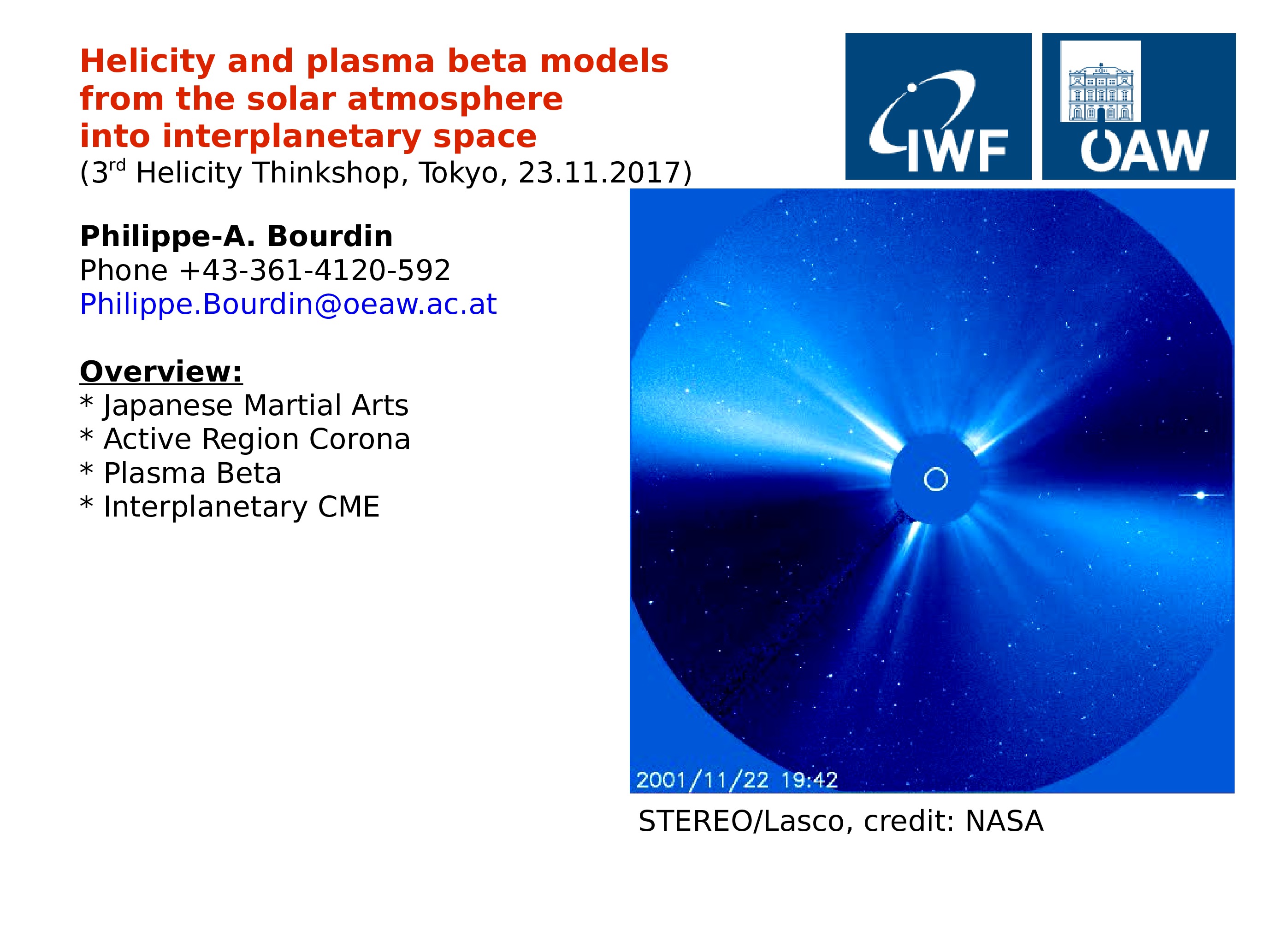Date of upload:
23.11.2017
Abstract:
The coronal heating problem is also tied to the change of magnetic helicity, because the dissipation of magnetic energy is a key energy source in the corona. MHD models suggest that the photospheric field-line braiding mechanism (Parker, 1972) is the driver of the coronal heating. As a consequence, the helicity change rate should be a marker of the actual dissipation. Though, such a process may only operate, if plasma beta is sufficiently small in order to build up magnetic stress within a magnetic flux bundle. On the other hand, a different kind of heating is expected, when coronal current sheets arise between large-scale magnetic field topologies that interact, which we call coronal tectonics. The latter may also operate if plasma beta is large. From simulation data, we test plasma beta in the solar atmosphere and relate helicity changes with coronal thermal energy input in order to identify the heating mechanisms. We find that the heating along hot coronal EUV-bright loops indeed correlates with local magnetic helicity changes. Ultimately, the solar atmosphere releases helicity on large spatial scales into the solar wind that is later observed, e.g., by the Helios-2 spacecraft at 0.4 AU. We fit a model of helical magnetic field and vortical plasma flows to an observed magnetic transient event.

